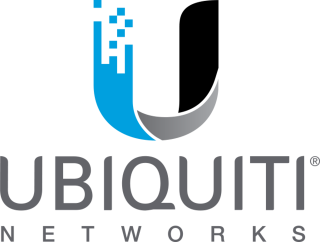Agile is one of the most widely adopted methodologies in modern IT, and for good reason. It helps teams respond faster, work more collaboratively, and deliver value in smaller, more meaningful chunks.
But moving to Agile is not just about using new tools or adopting new rituals. It requires a shift in mindset and culture.
Whether you’re working in software development, infrastructure, operations, or support, this guide will show you how to start using Agile methodology in a practical, sustainable way across your IT organization.
Step 1: Understand the Agile Mindset
Before you dive into ceremonies and tools, make sure your team understands what Agile really means. At its core, Agile is about:
- Working in short, iterative cycles
- Prioritizing people and communication over rigid process
- Releasing value early and often
- Welcoming change even late in a project
- Continuously improving how your team works
Make sure your leadership and team members buy into the idea that Agile is not a one-time shift. It’s a journey.
Step 2: Choose the Right Agile Framework
Agile is not one size fits all. Several frameworks follow Agile principles. Choose one that matches your team’s goals, size, and workflow.
Scrum is great for teams building software or managing sprint based work. It includes roles (like Scrum Master and Product Owner), daily standups, and structured planning.
Kanban is more flexible, ideal for operational or support teams. It emphasizes visualizing work and limiting tasks in progress.
Scrumban blends the two and works well for teams transitioning from traditional project management.
For IT teams managing systems or cloud infrastructure, Kanban often offers a gentle introduction to Agile with immediate benefits.
Step 3: Build a Shared Workflow
Start by creating a visual board digital or physical—to map your work. Tools like Azure DevOps, Jira, or Trello let teams manage and track work in real time.
Your board should include:
- Backlog – tasks or work not started yet
- To Do – current priorities for this week or sprint
- In Progress – what people are actively working on
- Done – completed items
This gives your team and stakeholders clear visibility into progress.
Step 4: Plan in Short Cycles
Agile teams work in timeboxed cycles—often called sprints (one to two weeks) or iterations. Each cycle starts with a planning session and ends with a review and retrospective.
During sprint planning:
- Identify what work the team can commit to
- Break down large tasks into smaller, actionable pieces
- Make sure everyone understands the goals
Avoid overcommitting—one of the key Agile principles is learning and adjusting, not perfect execution on day one.
Step 5: Run Daily Standups
Each day, have a quick check-in (10 to 15 minutes max). Everyone answers three questions:
- What did I work on yesterday?
- What am I working on today?
- Is anything blocking my progress?
Daily standups keep the team aligned and surface problems early, preventing delays or surprises.
Step 6: Encourage Feedback and Iteration
At the end of each cycle, hold two sessions:
- Sprint Review – Demonstrate the work that was completed, get feedback, and show progress to stakeholders
- Retrospective – A team only meeting to discuss what went well, what didn’t, and how the team can improve next cycle
This reflection helps build a culture of learning, not blame. Small, frequent improvements compound over time.
Step 7: Apply Agile to Other Areas of IT
Agile is not just for software developers. Here are ways other IT functions can benefit:
- Infrastructure Teams can deliver changes faster using Infrastructure as Code and Kanban style boards
- Cloud Operations teams can automate deployments and respond to incidents in shorter windows
- Support Teams can prioritize tickets more dynamically and measure improvement over time
- Security and Compliance teams can use Agile workflows to manage remediation tasks and track posture changes
The key is focusing on transparency, short cycles, and regular review regardless of the specific work being done.
Step 8: Define and Measure Success
Set clear, lightweight metrics to track progress and performance. Common Agile friendly indicators include:
- Cycle time (how long it takes to complete a task)
- Sprint velocity (how much work a team delivers each sprint)
- Team satisfaction and engagement
- Number of blockers removed
- Time to resolution for incidents or requests
Avoid obsessing over metrics—use them as conversation starters in retrospectives, not judgment tools.
Step 9: Evolve the Culture
Agile works best when supported by a strong team culture. Encourage:
- Shared ownership and accountability
- Trust between roles and departments
- Openness to feedback
- Willingness to change direction if needed
- Respect for work in progress
Culture is the engine that makes Agile stick.
Final Thoughts
Adopting Agile methodology across your IT organization takes more than process changes. It requires focus, patience, and commitment to continuous learning.
Start small. Pick one team, one project, or one area build a rhythm of planning, reviewing, and improving. Then expand your practices across teams and functions.
At Exodata, we help IT organizations design workflows that bring clarity, consistency, and agility across their cloud, operations, and development teams. Whether you’re launching your first Agile sprint or scaling a DevOps transformation, we can help.
Ready to make your IT team more Agile? Let’s build it together.










